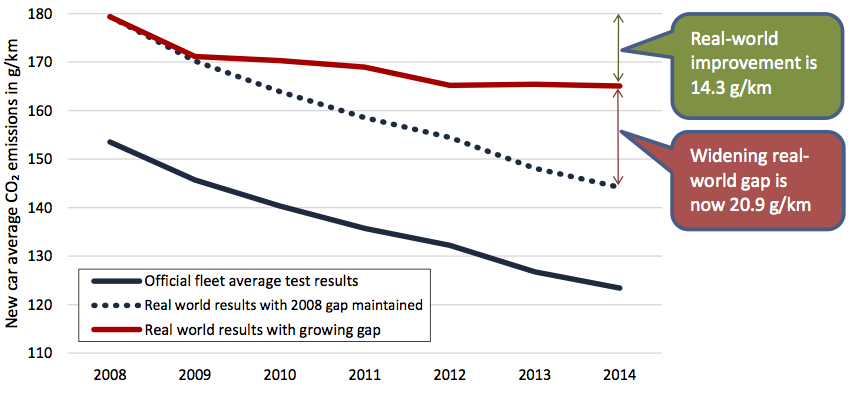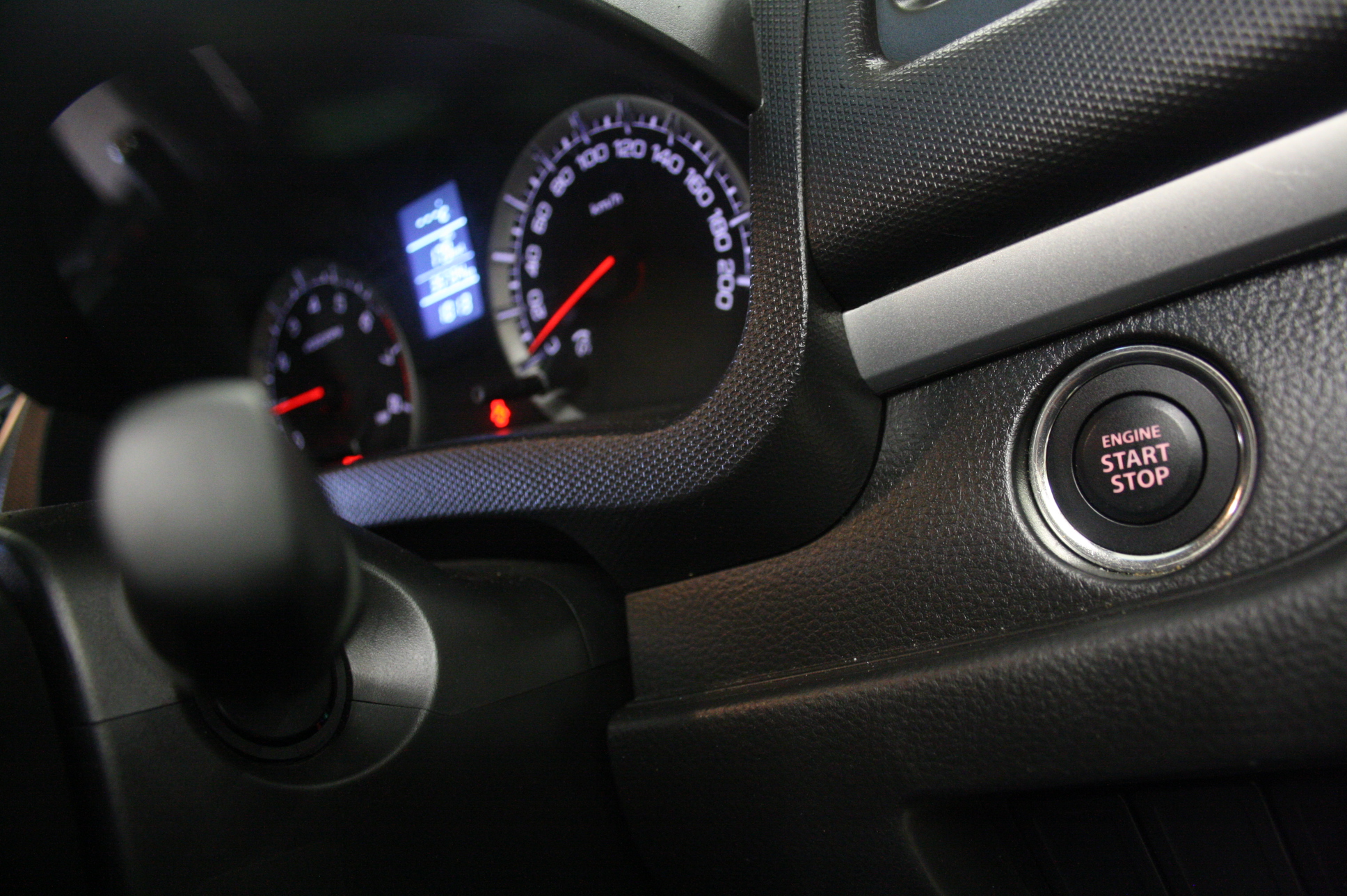

‘Test gaming will continue to undermine CO2 cuts after 2020’
While new cars sold in 2014 averaged CO2 emissions of 123g/km, according to the How Cleans are Europe's cars 2015? report, real-world emissions are much higher and reductions in CO2 are happening considerably slower than depicted. Now T&E is warning that the cheating will continue to undermine progress even after a new test, the Worldwide harmonized Light vehicles Test Procedures (WLTP), is introduced.
Interested in this kind of news?
Receive them directly in your inbox. Delivered once a week.
Half the progress officially recorded under the current obsolete system for testing car CO2 emissions, the NEDC – less than 2% improvement per year – is being achieved on the road. The gap between test and real-world performance has grown by 21g/km since 2008, according to the International Council on Clean Transportation – illustrated in the graph below by the dotted blue line.
Graph: Official CO2 test results versus the real-world outcomes for private motorists – provisional calculation for 2014
Source: derived from ICCT, 2014
T&E says this gap between test and real-world performance is a result of carmakers’ abuse of the test rules, fitting technology that delivers improvements largely in tests but not on the road, and switching off equipment such as lights and air conditioning. These abuses were set to be largely eliminated by the introduction of the WLTP in 2017.
But T&E analysis shows that the European Commission’s proposed correlation exercise – to revise company CO2 targets for 2020-2021 so that a target measured using the WLTP test has ‘equivalent stringency’ to those agreed based on the NEDC system – will allow for current methods of cheating. This follows pressure from the car industry and sympathetic EU governments, notably Germany and Italy, and effectively weakens the CO2 regulation through the backdoor by around 10g/km.
The unfair flexibilities include: charging the battery before the test; using outdated methods to calibrate the rolling road for the car; and a provision designed to minimise the test burden that actually allows carmakers to declare results 4% lower than the test results.
T&E clean vehicles manager, Greg Archer, commented: ‘The WLTP is test is being introduced to produce more realistic fuel economy figures and prevent manipulation of the current test. But carmakers want these distortions built into the rules governing how the new test is introduced, undermining its effectiveness.
‘The car-manufacturing countries of Germany and Italy aided by France and the UK want to weaken CO2 standards by the back door. By backing the interests of their car industries over drivers and the environment, cars will be less fuel efficient in 2020, costing motorists around €140 a year in fuel.’
